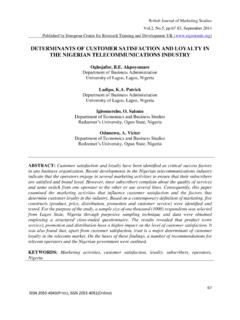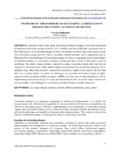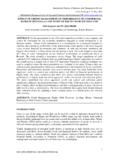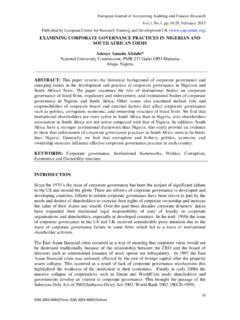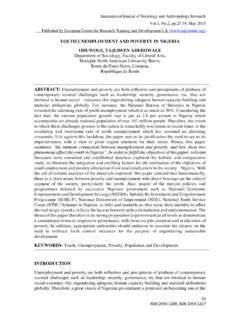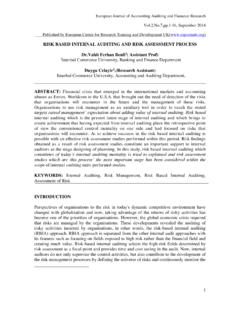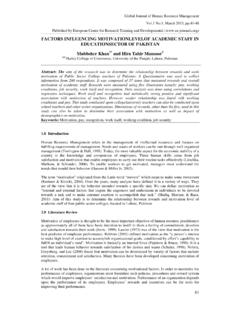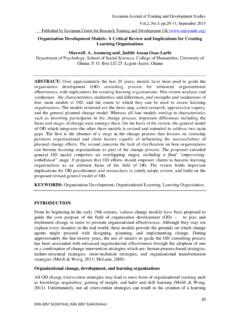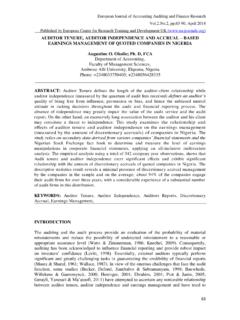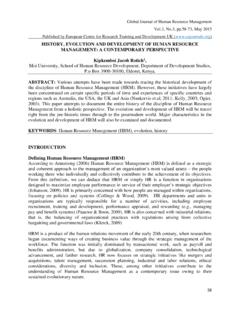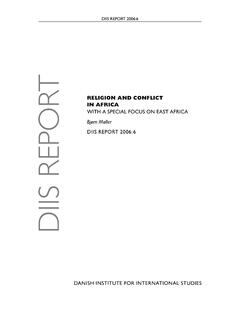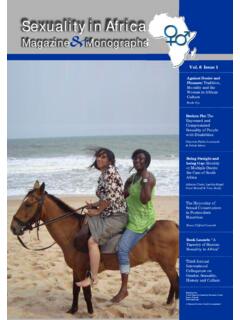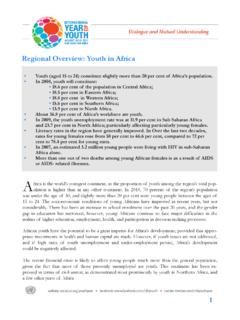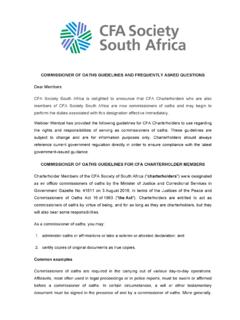Transcription of AFRICAN UNION AND CONFLICT MANAGEMENT IN AFRICA: …
1 International Journal of AFRICAN Society, Cultures and Traditions , , , March 2017. Published by European Centre for Research Training and Development UK ( ). AFRICAN UNION AND CONFLICT MANAGEMENT IN africa : THE ROLE OF. COMMUNICATION IN THE EFFECTIVENESS OF FUTURE INTERVENTIONS. Dr. Silk Ugwu Ogbu School of Media and Communication, Pan-Atlantic University, KM 52 Lekki-Epe Expressway, Ibeju Lekki, Lagos. Nigeria. ABSTRACT: As a continent with all kinds of existing and emerging conflicts , africa needs to invest hugely in CONFLICT prevention, resolution and MANAGEMENT in order to move towards the desired goal of integration, political stability and economic growth. Without peace and stability, it is impossible for development to occur.
2 Since the end of colonial rule, the retrogression of many AFRICAN countries has been traced to conflicts and the failure of extant resolution mechanisms to address the root causes of discontent, injustice and socio-political exclusion. The fact that conflicts now assume transnational and international dimensions has elevated the need for greater collaboration and cooperation among countries in CONFLICT MANAGEMENT , especially through the platforms provided by international organizations such as the United Nations (UN) and the AFRICAN UNION (AU). The AFRICAN UNION has been particularly instrumental not only in the identification, resolution and MANAGEMENT of intrastate and cross-national conflicts in africa , but also in the provision of a framework for multilayer co-operation, partnership and integration between governments and multinational actors across the continent.
3 This paper is an attempt to evaluate the performance of the AU in the MANAGEMENT of conflicts across the continent. To this end, the interventions of the AU in the conflicts in Burundi and Sudan were used as case studies. Specifically, this paper is of the opinion that indigenous CONFLICT MANAGEMENT techniques built upon traditional communication systems should be incorporated in a new approach to CONFLICT MANAGEMENT , if the AFRICAN UNION is desirous of impacting meaningfully on regional peace and security. KEYWORDS: Communication, CONFLICT MANAGEMENT , International Organizations INTRODUCTION. africa is a continent wrapped up in conflicts . From the Great Lakes region to the south and from the tropics in the west through the central region to the Horn of africa , there is no region that is not contending with conflicts , most of them violent and protracted.
4 The majority of these conflicts are intrastate while some are transnational, international or a mixture of some sort but almost all of them exhibit profiles of states that are weak or failing. Violent conflicts in africa have left a trail of devastation and gratuitous destruction, decimation and impoverishment of the civilian population, environmental degradation, institutional decay, political instability and socio-economic stagnation. The root causes of these conflicts can be traced to such factors as extreme poverty of the majority of the population; marginalization of the young people;. unequal sharing of resources; social and economic disparities; denial of freedom of expression;. and lack of participation and democratic structures (UNESCO, 1998).
5 As a successor to the Organization of AFRICAN Unity (OAU), the AFRICAN UNION (AU) was launched in Durban, South africa , in 2002, and may be described as a relatively young 13. ISSN 2056 - 5771(Print), ISSN 2056 - 578X(Online). International Journal of AFRICAN Society, Cultures and Traditions , , , March 2017. Published by European Centre for Research Training and Development UK ( ). organization. However, the challenges facing the organization are quite old and deep-rooted. In fact, it was the failure of the OAU to effectively manage these old challenges, especially the proliferation of violent conflicts throughout the continent that gave birth to the formation of a new organization that could act decisively to halt the downslide.
6 The principle of non- interference in the domestic affairs of member states, as it were, emasculated the OAU and rendered the organization impotent in the face of abominable atrocities, genocides and other forms of human rights abuses in Sudan, Somalia, Rwanda and other parts of the continent. Furthermore, the realization that intrastate conflicts have transnational and international ramifications, in terms of the surge of refugees across borders and in the general disruption of social and economic activities across the affected regions may have convinced the AFRICAN Heads of States on the necessity of a new organization that would be empowered to deal with the dynamics and emerging challenges of violent conflicts across the continent.
7 Although, the AFRICAN UNION was formed under difficult circumstances, it was faced with great expectations from a continent in need of swift solutions. Unlike the OAU before it, the new organization was given the mandate to intervene in any CONFLICT , anywhere in the continent, irrespective of its nature or location, as long as such CONFLICT has the potential to destabilize the political and socio-economic balance of the continent or the capacity to destroy precious civilian lives. However, the impression must not be made that the AU was formed just for the purpose of resolving or managing conflicts alone. From a broader perspective, the AU was created to facilitate the achievement of other great objectives.
8 These objectives include the following: I. To achieve greater unity and solidarity between the AFRICAN countries and the people of africa ;. II. To defend the sovereignty, territorial integrity and independence of its Member States;. III. To accelerate the political and socio-economic integration of the continent;. IV. To promote and defend AFRICAN common positions on issues of interest to the continent and its peoples;. V. To encourage international cooperation, taking due account of the Charter of the United Nations and the Universal Declaration of Human Rights;. VI. To promote peace, security, and stability on the continent;. VII. To promote democratic principles and institutions, popular participation and good governance.
9 VIII. To promote and protect human and peoples' rights in accordance with the AFRICAN Charter on Human and Peoples' Rights and other relevant human rights instruments;. IX. To establish the necessary conditions which enable the continent to play its rightful role in the global economy and in international negotiations;. X. To promote sustainable development at the economic, social and cultural levels as well as the integration of AFRICAN economies;. XI. To promote co-operation in all fields of human activity to raise the living standards of AFRICAN peoples;. XII. To coordinate and harmonize the policies between the existing and future Regional Economic Communities for the gradual attainment of the objectives of the UNION .
10 XIII. To advance the development of the continent by promoting research in all fields, in particular in science and technology;. XIV. To work with relevant international partners in the eradication of preventable diseases and the promotion of good health on the continent. 14. ISSN 2056 - 5771(Print), ISSN 2056 - 578X(Online). International Journal of AFRICAN Society, Cultures and Traditions , , , March 2017. Published by European Centre for Research Training and Development UK ( ). In pursuant of the stated objectives above, the AU constituted various specialized organs. Some of these include: Pan AFRICAN Parliament (PAP): This is the legislative body made up of 265 elected representatives from all 54 member states of the AU.
